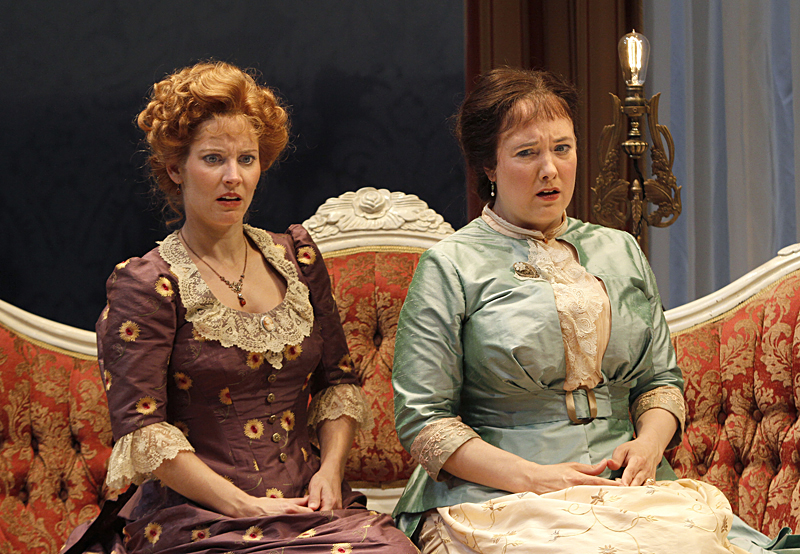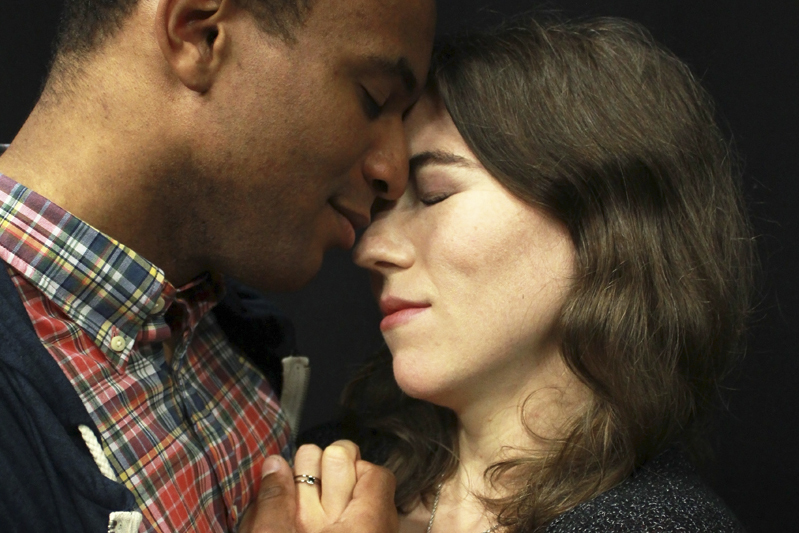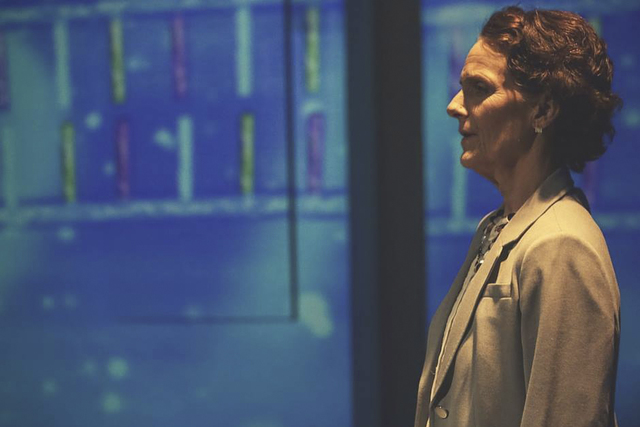The discovery in the late 1800s of how to harness electrical energy through a circuit bore curious fruit in our uptight culture. A new vibrating machine could supposedly cure “hysteria,” the ancient, inherited term for all manner of female ills. (Today, we’d call them depression and sexual repression/deprivation.) Sarah Ruhl’s 2009 comedy, directed with gentle wit by Kurt Beattie, pits the doctor’s simple on/off stimulation against the patient’s physiological complexities. It’s a charged historical moment, set during a time when female sensuality was mostly exiled to lush music and poetry.
Soon after giving birth in upstate New York, the vivacious Catherine Givings (Jennifer Sue Johnson) is flickering between forced cheer and despair over her inability to provide milk for her baby. Her prim, inattentive husband Dr. Givings (Jeff Cummings) is too busy vibrating other men’s wives free of their hysteria to notice his own wife’s misery. Overhearing an ecstatic patient inspires Catherine’s curiosity about this new treatment for inducing “paroxysms.” She begs her husband to “experiment on me!”, and his reluctance to do so provides most of the story’s meager conflict.
But what it lacks in narrative oomph is made up for by a cascade of intriguing eddies that spin out in the several unwalled “rooms” of Matt Smucker’s sparely suggestive set, which features surely the most vulvar Victorian sofa ever designed. Concentric story ripples include the employment of African-American wet nurse Elizabeth—a dignified and heartrending Tracy Michelle Hughes—whose surplus resulted from her own child’s death; and the overly forward Leo (Connor Toms), who comically endures the doctor’s rough treatment with the device as punishment for overfamiliarity with his wife. Even the amusingly businesslike nurse Annie (Mary Kae Irvin) gets an awakening, albeit a somber one.
Beattie and his able cast know how to shift gears smoothly among Ruhl’s hodgepodge of tones—sometimes comic, sometimes somber, sometimes anguished. At two and a half hours (including intermission), there’s a languor to the sprawl, but also plenty of titillating tremors to maintain engagement.
And for those craving further study on Ruhl’s topic, there’s an impressive display of vintage vibrators in the lobby, courtesy of Babeland. Some of them resemble instruments of torture, since no respectable (male) doctor could ever admit to pleasuring his patients.








